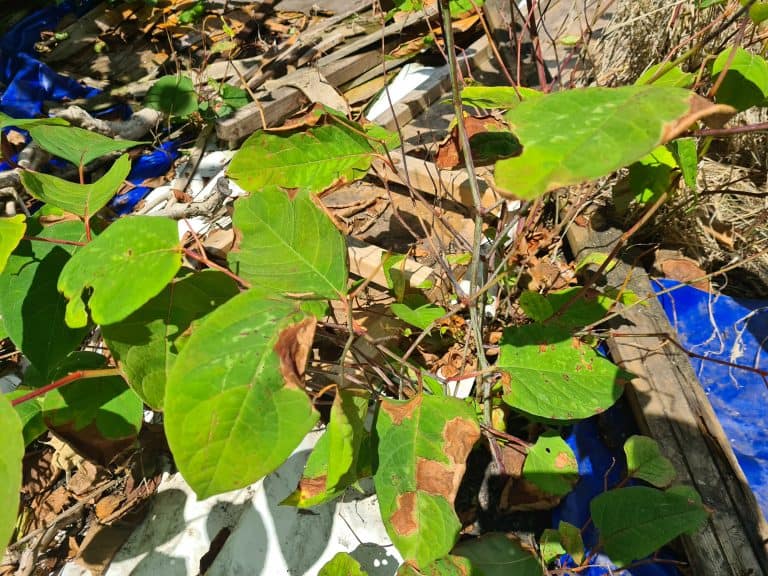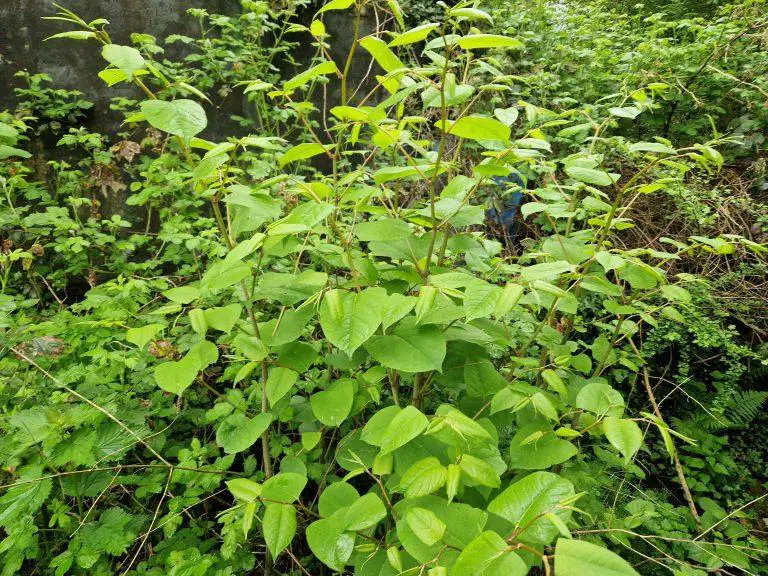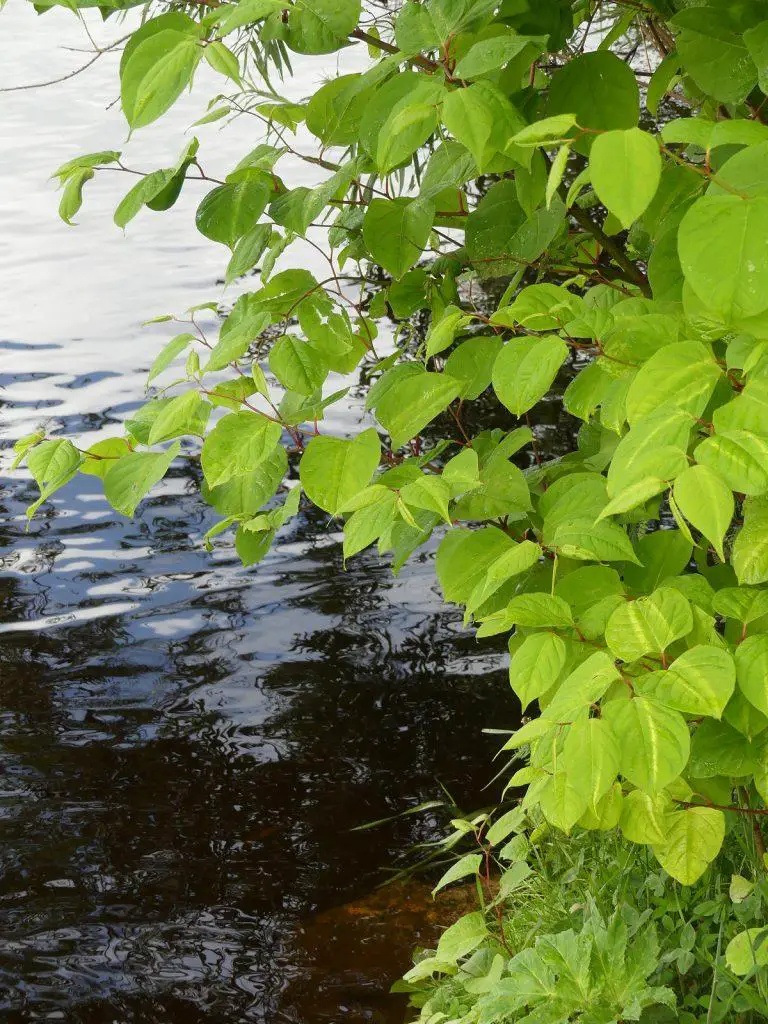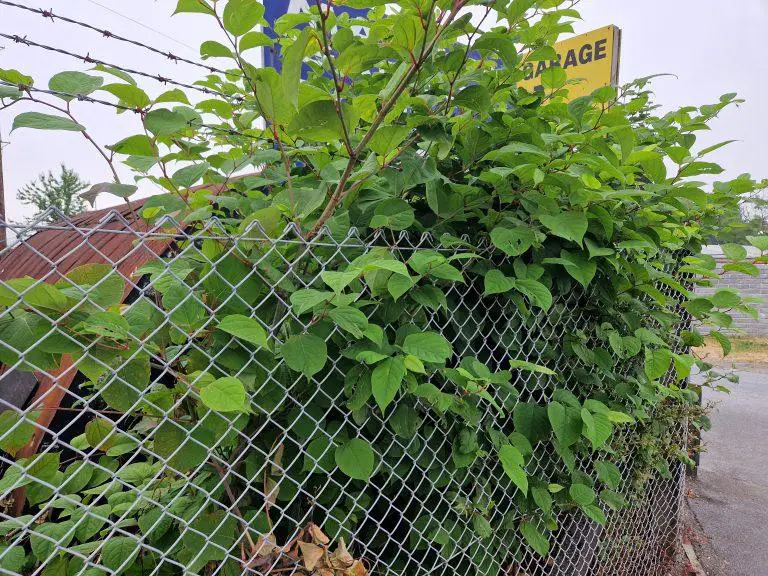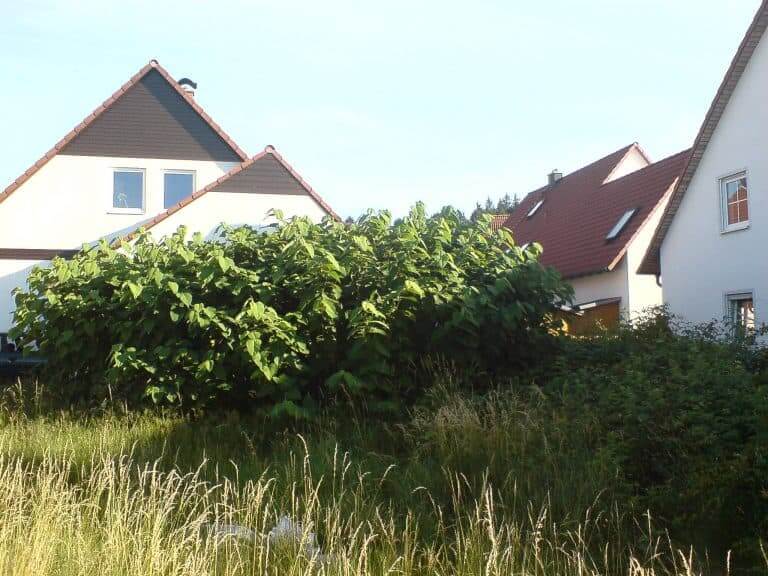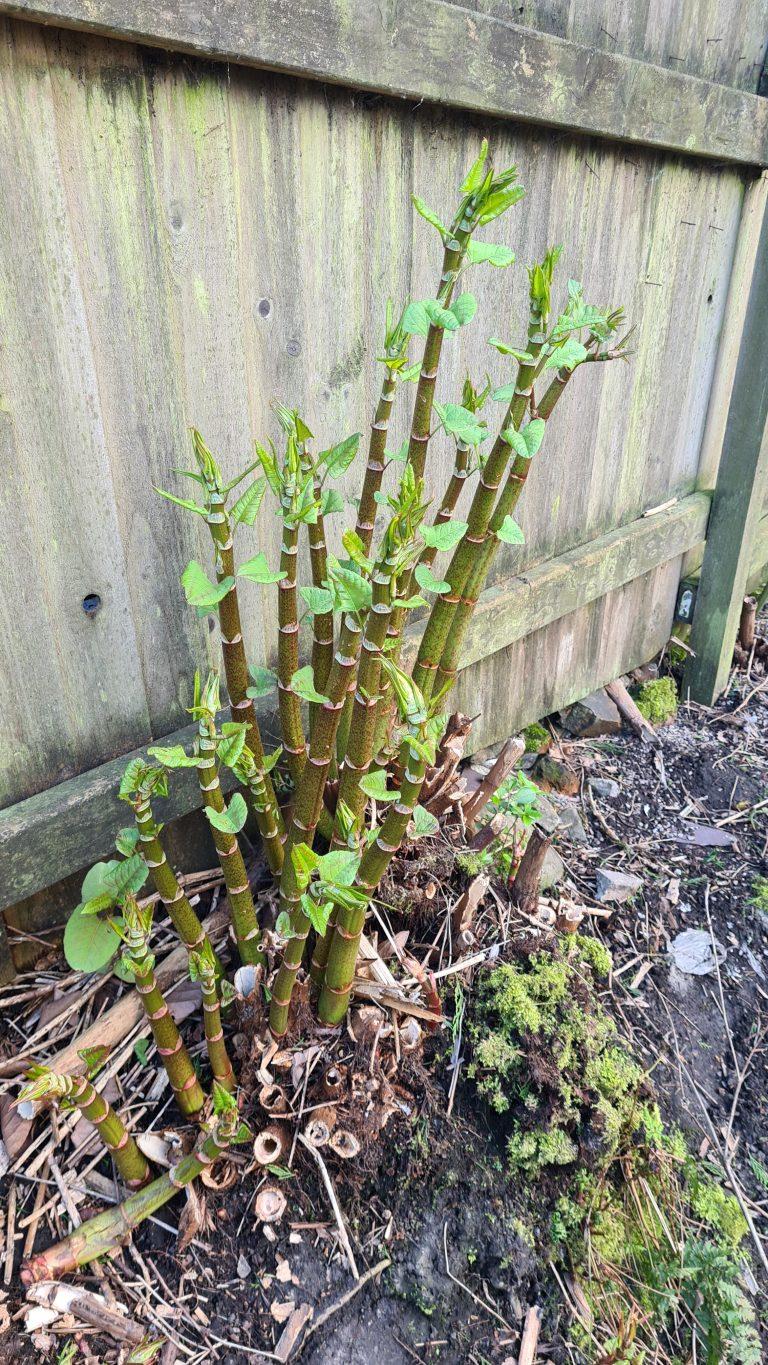Japanese knotweed is notoriously difficult to eradicate due to its extensive root system and ability to regrow from even small fragments. However, the knotweed crowns present a unique challenge in the eradication process.
In this blog, we will explore why Japanese knotweed crowns can be particularly difficult to eradicate and the measures that can be taken to address this issue.
According to the Royal Horticultural Society, Japanese knotweed is capable of growing at a rate of up to 10cm per day during its peak growing season.
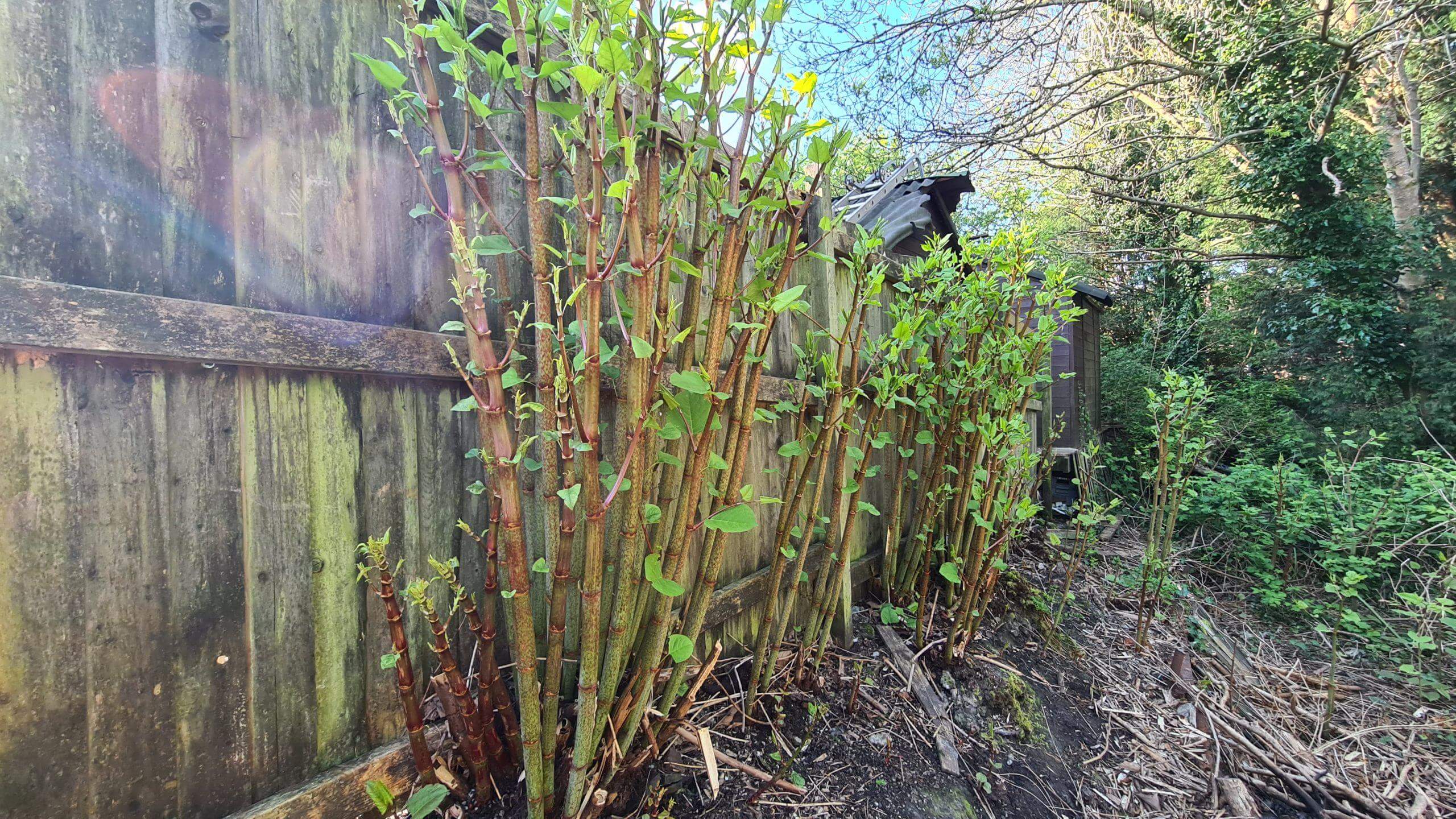
What are Japanese Knotweed Crowns, and How Do They Affect the Eradication Process?
Japanese Knotweed is an invasive plant species that can cause significant damage to the environment, infrastructure, and property. One of the key factors in eradicating Japanese Knotweed is understanding how it reproduces and spreads, which begins with its crown. The knotweed crown forms a vital part of the plant’s lifecycle, as it acts as a storage system for food reserves and helps to spread rhizomes underground.
Therefore, if left unchecked or not properly treated during the eradication process, knotweed plants may regrow from previously established crowns due to their stored energy reserves. To ensure the successful eradication of this troublesome weed species, it is important to understand what makes up a knotweed crown and how they impact the control process.
The crowns of Japanese Knotweed consist of a cluster of highly-branched stems that arise from the rhizomes and extend above ground. When the plant goes dormant during colder weather months, it relies heavily on its crown to store surplus energy reserves that are then used when the plant re-emerges in spring.
The knotweed crown also plays a key role in the plant’s reproduction, as it sends out rhizomes into the surrounding soil. These rhizomes are capable of establishing new colonies, even if the above-ground portion of the plant is removed or destroyed.
In order to effectively eradicate Japanese Knotweed and prevent it from re-establishing itself, it is important to understand how the crown works and how it impacts the control process. As part of an eradication program, all above-ground growth should be carefully removed and disposed of correctly. In addition, a plant’s rhizomes must also be treated either through chemical treatment or excavation.
Removing or treating the knotweed crown is essential for successful eradication, as it helps to prevent the plant from re-emerging and regrowing from its stored energy reserves.
Understanding how the knotweed crown works and how it contributes to the resilience of this troublesome weed is key to eliminating Japanese Knotweed from any given site. The correct removal and disposal of above-ground growth and the treatment or excavation of rhizomes are essential steps in any eradication program.
With the right knowledge and tools, it is possible to successfully control Japanese Knotweed and prevent it from causing further damage.
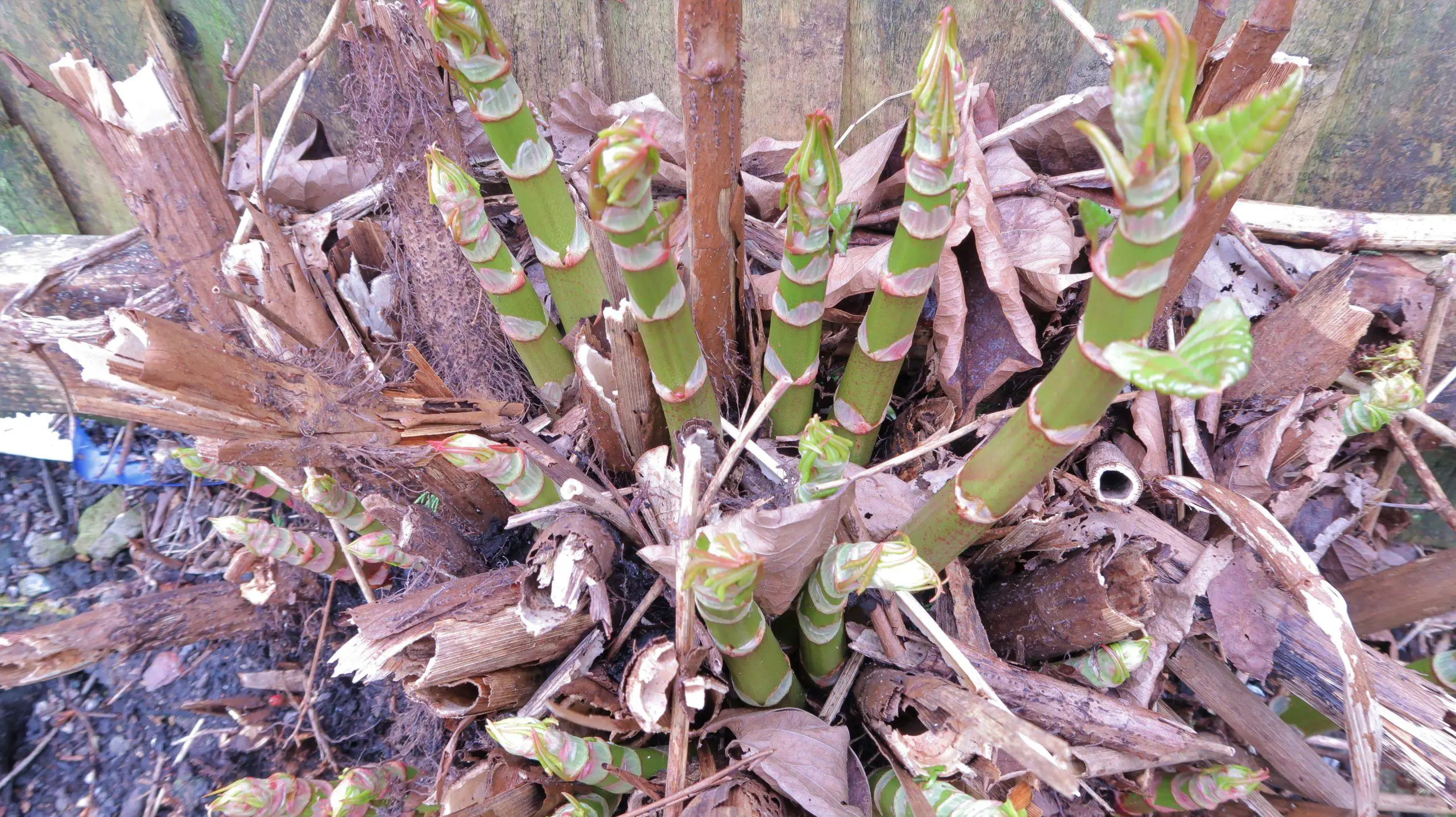
Challenges in Eradicating Japanese Knotweed Crowns
One of the biggest challenges when attempting to eradicate Japanese Knotweed is dealing with its crowns. The crown, which is located at the base of the plant, can be difficult to access and identify due to its position below ground level. This can make it difficult for eradication teams to accurately assess how much of a threat it poses and what steps need to be taken in order for successful removal.
Furthermore, even once identified, the crown’s resilience makes any efforts made towards complete eradication less effective as they are often able to survive traditional treatments such as herbicides or digging out by hand.
As such, it is important that any efforts to eradicate Japanese Knotweed consider the crown as a potential source of re-growth and develop strategies to combat this. One way of doing so is by using steam treatments which have been shown to provide better results in terms of complete eradication.
Therefore, identifying and managing the challenge posed by the crowns can be key to successful Japanese Knotweed management.

Methods for Eradicating Japanese Knotweed Crowns
Japanese Knotweed is an invasive species of plant that can cause significant damage to property and the environment. It is important to eradicate this weed as soon as possible in order to prevent further spread.
Fortunately, there are several methods available for eradicating Japanese Knotweed crowns, including chemical treatments and manual excavation and removal. In this article, we will explore the benefits and limitations of these two methods so that you can make an informed decision about which one is best for your situation.
Chemical treatment of Japanese Knotweed crowns involves the application of herbicides directly to the weed in order to kill it. This method is effective at eliminating the entire plant, including its root system, and can be completed relatively quickly.
However, chemical treatments require careful application and must be repeated multiple times until all new growth is eliminated. Furthermore, they can be hazardous to the environment if not used properly.
Manual excavation and removal of the crown is another method that involves digging around the weed and manually removing it from the ground. This method is more labour-intensive than chemical treatments but also involves fewer potential risks.
Additionally, it allows you to see exactly what you are dealing with and can be more effective at eliminating all of the root systems. However, manual excavation can also be time-consuming and difficult without the right tools or expertise.
When deciding which method to use for eradicating Japanese Knotweed crowns, it is important to consider both the benefits and limitations of each one. Chemical treatments are typically faster but come with additional risks, while manual excavation and removal can be more effective but require more labour.
Ultimately, the best method for you will depend on your specific situation and needs. Be sure to weigh all of your options carefully before making a decision.
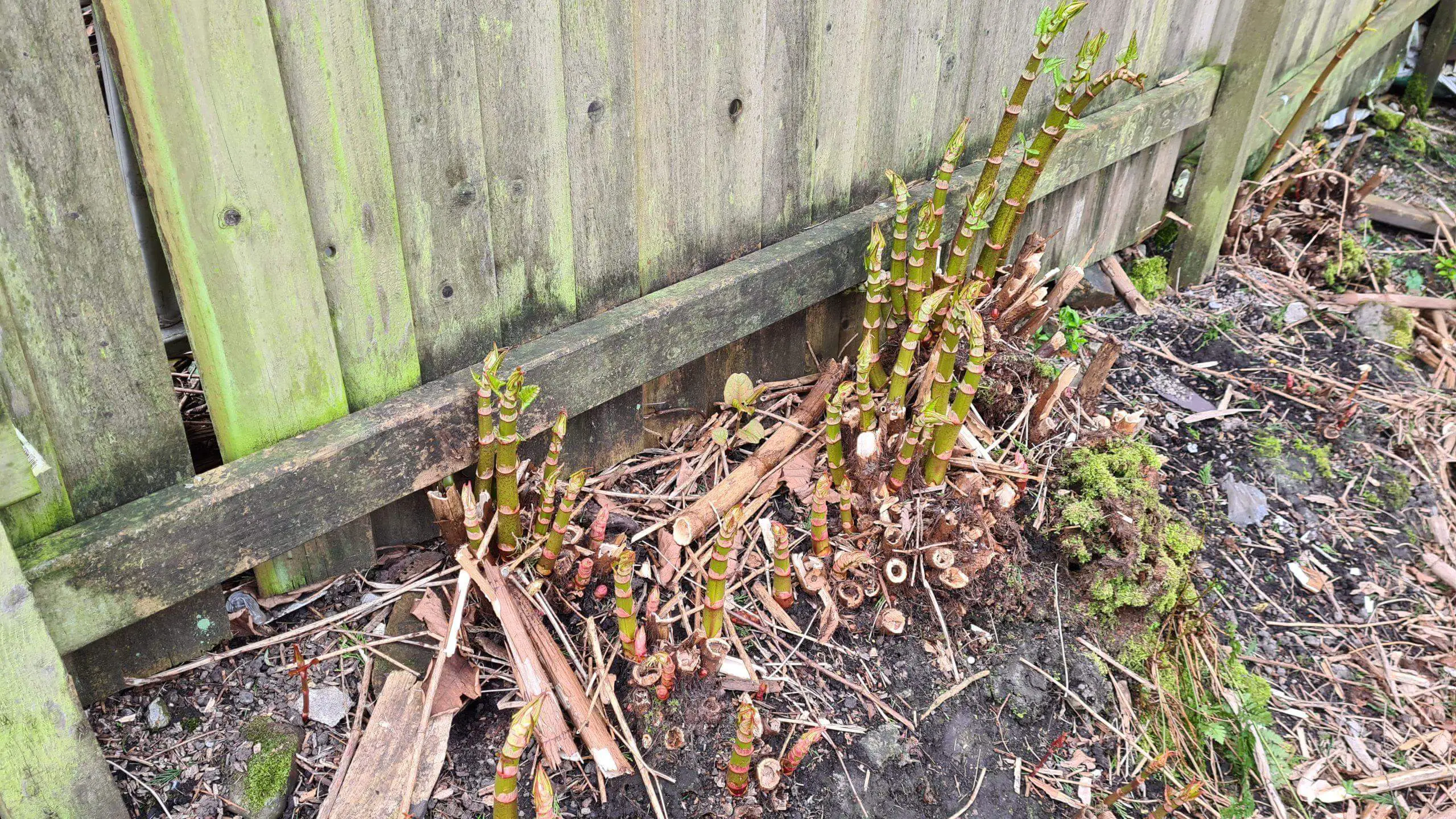
Preventing the Spread of Japanese Knotweed Crowns
Japanese knotweed is an invasive species that has caused significant damage to ecosystems and infrastructure worldwide. It spreads quickly and can be difficult to eradicate once established, so preventing the spread of its crowns is essential for controlling this plant.
Proper disposal of all fragments and plant material from Japanese knotweed is key in preventing its spread as even a single piece can potentially cause new growth elsewhere. This article will discuss best practices for preventing the spread of Japanese Knotweed crowns through proper disposal techniques.
When disposing of Japanese Knotweed material, it is important to ensure that no fragments or seeds remain. Any pieces left on the ground may sprout new growth and spread to other areas. All knotted stems should be cut into smaller portions and disposed of in sealed bags or containers.
It is also essential to avoid burning knotweed material since doing so can release thousands of viable seeds into the air. Instead, all plant material should be double-bagged and taken to a landfill or other designated disposal site.
In addition to proper disposal methods, it is also important to take preventative measures when handling Japanese Knotweed crowns. Before removing the stems, make sure that all nearby soil is covered with plastic sheeting or a tarp to prevent any fragments from escaping.
When transporting the stems, always ensure that they are secured in a containment device such as a trailer and wrapped in plastic. Finally, it is essential to never discard knotweed material near rivers or streams since these bodies of water can act as pathways for the spread of the plant.
By following these best practices, it is possible to prevent the spread of Japanese Knotweed crowns and protect ecosystems from this invasive species. Proper disposal techniques and preventative measures are critical for maintaining healthy environments and safeguarding infrastructure from damage caused by this plant. With careful handling, it is possible to limit the spread of Japanese Knotweed and keep ecosystems safe from the impacts of this invasive species.
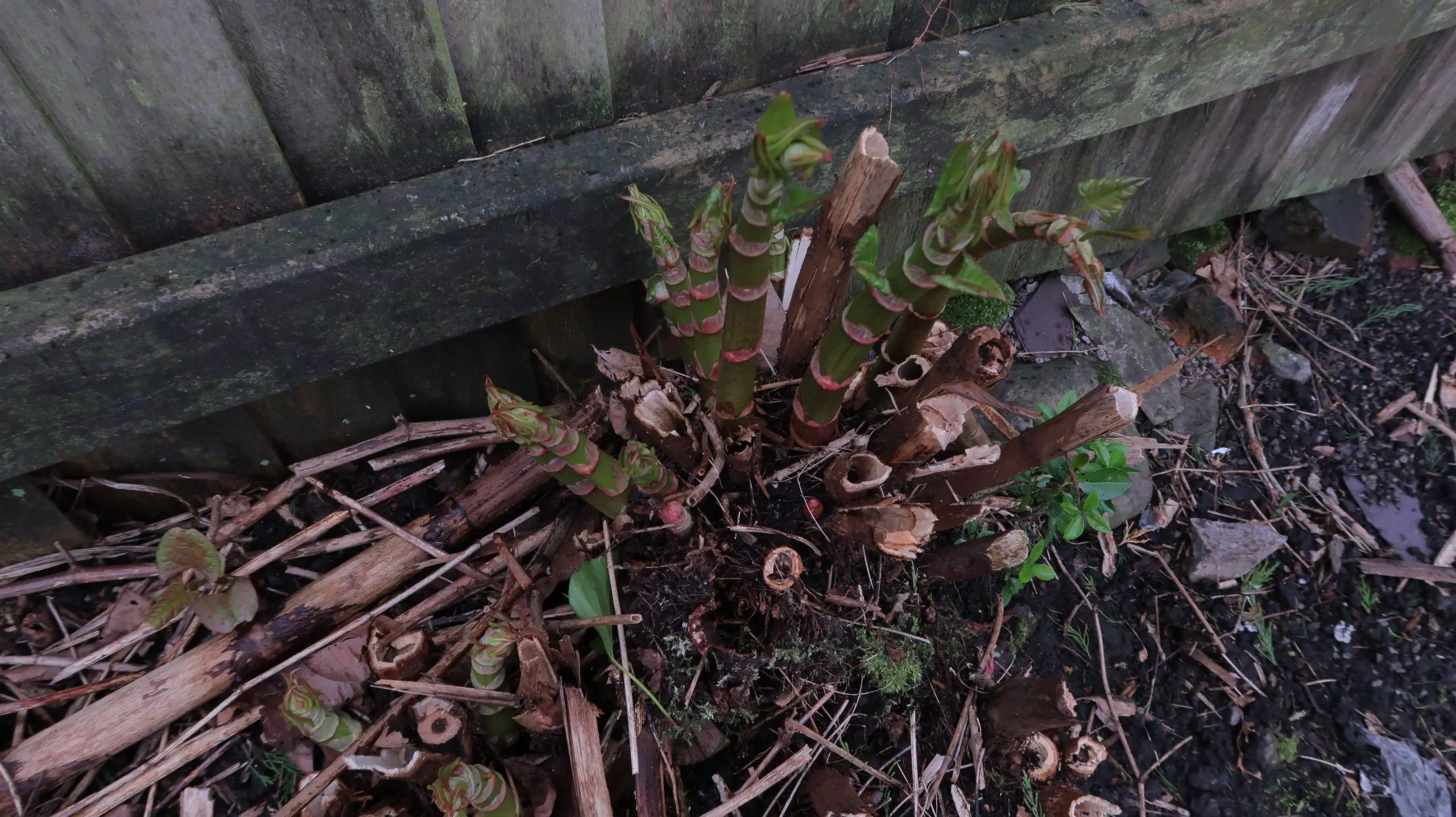
Special Note: Caution when using herbicides
It is also important to exercise caution when using chemicals or other forms of control for Japanese Knotweed as these can have detrimental impacts on native plants and wildlife. Herbicides are effective at controlling the plant but must be used with extreme care to prevent any harm to local ecosystems.
Furthermore, if mechanical control methods such as digging or mowing are employed, any remaining roots should be treated with herbicides in order to prevent future growth of the plant.
By following these guidelines and exercising caution when handling Japanese Knotweed crowns, it is possible to limit the spread of this invasive species and protect local ecosystems from its impacts.
Final thoughts
In conclusion, the challenge posed by Japanese Knotweed crowns should not be underestimated. Accessing and identifying them can be difficult and their resilience often makes attempts at successful eradication less effective.
Therefore, it is important that any attempts to manage Japanese Knotweed consider the crown as a potential source of re-growth, developing strategies such as steam treatments to ensure complete removal. With this in mind, Japanese Knotweed can be effectively managed and prevented from returning.
Japanese knotweed crowns can be a significant challenge in the eradication process, but there are methods available to effectively address them. If you suspect that you have Japanese knotweed on your property, it’s important to act quickly and seek professional help to ensure that eradication efforts are as effective as possible.
By taking proactive steps to control knotweed and prevent its spread, you can protect your property and the environment from the damaging effects of this invasive species.

